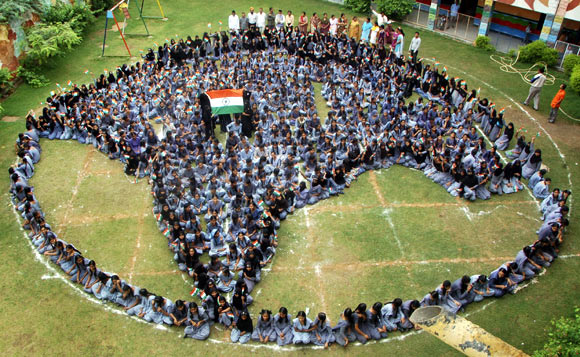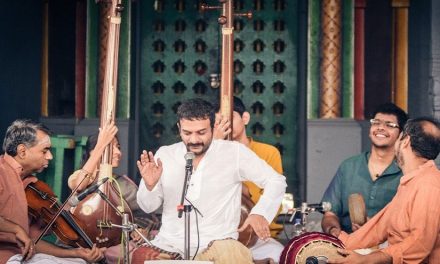GRATITUDE

SRI SINGARAVELAN
CHAFFEUR, REGIONAL OFFICE
KENDRIYA VIDYALAYA SANGATHAN , CHENNAI
A person of initiative and dynamism who can get things done through his network. His guileless smile attracted all towards him. One whom the Author’s wife used to call him as ‘Our Son’. Was of great assistance to the Author when he was Education Officer in KV Regional Office, Chennai (1979 – 92)
VOLUME VII – CHAPTER 5
THE INSPIRED BECOMES THE INSPIRATION
DO YOU HAVE A “PERSONA?”

An African writer said during the Jaipur Literary Festival, “I must have fire in me to write about my country.”
Do you have the fire in you? The grit and determination to get things done, the indefatigable enthusiasm is for work. The unquenchable thirst is for serving the cause of education. Only a burning fire can light another fire. The fire in you is the spark – the inspiration. Then you are the inspired. Only the inspired can inspire others.
Dr. Radhakrishnan remembered his 3rd Class teacher at Tirutani and wanted to take his blessings before starting his work as President. Dr. APJ Abdul Kalam told the author in the Raj Bhavan at Chennai in December, 2002, “Mr. Sivasubramania Iyer, my IV Class Science Teacher only has put me in the Rashtrapathi Bhavan.” The author found such inspired teachers (who inspired him) in Sri. K. Kuruvilla Jacob, Kulapathi S. Balakrishna Joshi, Sri. S. Natarajan – Sri. V.T.M. Thirunavukkarasu Chettiar, Prof. K. Subramaniam, Prof. K. Subramaniam, Prof. C. Jagannatha Chari, Prof. A. Srinivasa Rahava, Rev. Ayya Avl., Sri. T.S. Avinashilingam(Author’s mentor) and Dr. K. Kulandaivel (Author’s Principal).
The inspired know to understand problems in their proper perspective, not look at them but look into them, find out who and what have caused the problem, take a holistic view of the whole issue and think out alternative solutions and choose the best course of action.
They have inclusive skills and a mature leadership. They always take one thing at a time. They see if they can offer something better than others. If they have good case they can’t take no for an answer. They don’t live in the past. They don’t delve too much in the future. They live in the present actively. For now they focus on keeping the accelerator pedal ready for revving. They compete with themselves. They talk to their associates directly cutting across hierarchy.
To use Carl Jung’s phrase, they have a ‘persona’ – A social mask that is not fake, but an expression of their own true nature, their involvement in and identification with the work. They do not make their persona a prison for them. They always play their part well; but they never forget who they are.
Their focus on time management is for changing their approach, their responses according to the issues they deal with. They plan every day evening the next day’s work. They know each one’s strength and allot work suited to their strengths. They know how to say a no. They are organized in everything.
They know that a bad image will destroy them. They remember the story of the mongoose which tried to save the owner’s child from the snake and when the mother saw blood in its mouth, she mistook that it had bitten her child and in a fit of rage killed it. The mongoose didn’t project its image properly.
They have understood the import of the old story of the lion and the rabbit who beguiled the lion into jumping into a well. When somebody praised them they accepted it gracefully but did not allow it to throw them off their feet. They remember the story of the rat, the fawn, the crow and the turtle who saved one another with their respective skills. They forge alliances with people different from them and utilize their strengths which they lack.
Like the crow which stuffed a narrow necked pitcher with stones and raised the water level for drinking, they find ingenious solutions to problems.
They define a vision and a strategy:- They aspire, plan and lead for growth and progress. They carry a long term vision and are capable of taking people with them. They are visionaries who work from their heart.
They ensure that right things occur at the right time in the right manner. They don’t feel that only one job is assigned to them. They take responsibility for everything. They are modest to the core because they know that people before them have achieved much more. They never give up anything without trying. They value their people as their most important assets. They make their people dream their dream and enable them to make it a reality. They allow their people to innovate and experiment.
These are the qualities the author had learnt and imbibed from the aforesaid inspirational greats.
PRESENT A NEGATIVE FACT IN A POSITIVE WAY

Once the author was with Sri. S. Natarajan, Headmaster, St. Gabriel’ High School, later Vice-President, World Confederation of Teaching Profession and also Secretary, All India Council of Secondary Education, Govt. of India, New Delhi. A Headmaster of a school came to meet him. He told Sri Natarajan, “Sir, last year our results were 25%. This year it is 30%. I don’t know how to face the management and the parents? Our Correspondent has convened a parent’s meeting on coming Saturday, 2 days more.” Sri. Natarajan patted him on the back and told him, “Don’t worry. Tell them, it is encouraging to find an important rise in the rate of results of our school. After saying this, you describe all the efforts you have taken to improve the performance of the children and what further you propose to do this year.”
That day the author learnt how to present a negative fact in a positive way.
In 1978 the author was talking to the General Manager of John Lewis Departmental stores at Sheffield, UK. Just then he received a call from his boss asking him the reason for the reduced footfalls (Customers) during the previous month. The General Manager replied, “Our customers have ‘leaked’ to the convenience stores.”
The author used this later to advise a correspondent who complained about the reduction in his school strength. The author told him, “Perhaps your school parents have ‘leaked’ to the low fees schools nearby.” Think whether you have the power to turn schooling into an exciting experience coupled with an infectious enthusiasm of passionate, knowledgeable staff. Unless and until you make ‘your school a Brand’ parents will continue not merely to leak, but to cascade.”
Mr. Thirunavukkarasu Chettiar once told the author, “If you want to play safe, it means you are anchored in the past. But if you want to do something new it means you are looking into the future. You can’t create without failing. Do you know Picasso thought one of his paintings was a failure and hid it for 25 years. But later it launched Cubism. You should understand that there is a close relationship between failure and change and creativity. You as a teacher and myself as a H.M. have to develop a great tolerance for the idiosyncrasies and eccentric notions of our students and teachers. Otherwise our lives will be boring. We have to understand them as they think. Remember change means opportunity. Unless you welcome and accept failures you can’t move ahead. These are the speed breakers on your path to greatness. Take the advice of the Gita. Stop being your unworthy enemy. Otherwise you become a decrepit living fossil.”
This was the inspiring advice he gave to the author before he left the school to join Sri Ramakrishna Mission Vidyalaya Teacher’s College, Coimbatore, as an Asst. Professor.
After becoming Principal of Kendriya Vidyalaya the author met Prof. A. Srinivasa Raghavan, who told him:- “As a Principal, you are like the conductor of an orchestra. You have to get to know the names of everyone and get everyone to finish on time together. A conductor can’t afford to be arrogant with his orchestra and try to impose himself on them too much.”
The author had always been like a conductor absolutely devoid of arrogance and has never imposed himself on his staff. He knew not only the names of his staff but also the students in the school. That was the secret of his H.R. During inspection staff meeting (on the last day) he used to ask the Principal to introduce each staff by their names, designation, qualification and classes handled. This was “The Test” for the Principal – if he knew everyone, it meant his H.R. was good.
CAPTURING THE MOMENT

In Lucknow there is a delicacy for which the Nawabs of Awadh were very fond of viz. Ghai Ki Roti which is made from wheat flour and served with mouth watering Batgan Ka Barta, Mint Chutney and Kachumbar (Spicy Onion salad). The Roti just melts in the mouth. It gets its name from the Urdu word ‘Ghai’ (The space between two fingers). In the old days in the Banarchi Khanas (Kithcens) the ‘Lakdika Chulah (Wooden stove) would be adjacent to the wall. The secret of this Roti is that it is cooked in the heat trapped between the wall and the Chulah, fuelled with either firewood or Charcoal. The trick lies in kneading the atta (dough). It has to be properly done for the Roti to be soft.
This was described by Prof. Jha, Vice Principal, Teachers College, Patna to the author on board the French ship ‘Messageris Maritimes’ in which they travelled from Bombay to Marseilles from the 29th July to 15th August 1961. On their way to U.S.A., Prof. Jha told the author that the Chulah and the wall are the teacher and the parents. Between these two are the students who should be moulded by the warmth of affection of both (not heat), that was an inspiring lesson.
The author had the good fortune to work with a great art teacher Sri. N. Shanmugam at K.V. AFS, Avadi. He lived, felt, breathed art. He used to say, “Sir, painting and photography will come out well only if and when you capture the mood or the moment of what you want to reproduce on canvas or capture in your camera. You should be watchful so that you don’t miss it.” Teaching is also like that. If you can understand the mood of the student or seize that particular moment when he yearns to learn, then what you teach he will readily assimilate.
That “Moment” he was in “a Mood” and the author got a valuable inspiration from his staff. Shanmugam became the student of Shanmugam! Years later when Kodak filed for bankruptcy, the author remembered the words said by Mr. Shanmugam – Photoghraphy is all about capturing the moment! The pity and irony is that Kodak could not seize its moment when the Digital Era came.
DON’T SPEAK IN TWO VOICES

During his visits to the Kendriya Vidyalayas in West Bengal, the author, once visited David Hare Training College to meet his old friend (came to USA with author) Dr. N.L. Bhasak working there. During lunch Dr. Bhasak mentioned that the voice of the Principal and the voice of the staff should not be like what they call ‘Epar Bangla’ and ‘Opar Bangla’ – The two different Bengali languages spoken on either side of the border – West Bengal and Bangladesh. Unless they both speak in the same manner the students will get confused as to who is correct and whom they should follow.
The author found a similar situation in a relative’s house where the mother (Daughter–in-law) and the grandmother (Mother-in-law) gave two different instructions to the children who were left wondering whom they should obey?
When the voices of the Principal and the staff are differently tuned, “what can the students do?” asked the author to his colleague Dr. Vedamani Manuel and the author’s Professor in the Teacher’s College, Saidapet, Chennai. With a twinkle in his eye he replied.
“The students certainly need the endurance of the donkey, the cleverness of a fox, the strength of a bull and the patience of a camel, to steer clear of these two conflicting voices.”
The author had never allowed the two voices, to sing in low and high octave – but always in unison.
While the author was working at Sambalpur in Orissa he found that the tribals had an interesting method of helping themselves. With the help of a social activist they organized a Grain Bank, in which each house hold to contributed 3 to 5 Kg. Of Paddy and Ragi and a NGO offered to contribute an equal amount. The local SHG managed the grain bank. Farmer Ram may take a loan of 6 manas of Paddy repayable at the interest rate decided by the Village Committee. Excess stock was sold in the market.
When the author found the morale of the staff and students low he decided to make use of this idea to whip up their enthusiasm. He initiated an ‘idea bank’- Each one to contribute 2 ideas. Doubts or questions for which they want an answer and clarification of ideas they have but don’t know how to take it further. From the bank each one can take any one idea that interests them and develop it taking even the help of the idea originator. Through this we built a pool of ideas and this exercise fostered co-operation between the students and finally resulted in two students securing the coveted Science Talent Scholarship also.
The inspired leader is a combination of competence and character and belief – values. Your people should know what you stand for – your core values and where you stand – your ethical behaviour. This was the advice given to the author by his mentor Sri. T.S. Avinashilingam, when he took over as Dy. Director (Training), South Zone in the Ministry of Community Development.
TRAIN THE PUPILS TO QUESTION YOUR ANSWERS

The author while working as Professor in the Teachers College used to sit in his senior colleagues classes and observe their classes. For the teacher trainees it was an example for the junior to observe the seniors and for him it was a useful learning experience. Once when he was observing the class of Prof. H. Visweswaran he heard him tell the trainees a story:-
A friend once asked Isidor Isaac Rabi, a Scientist (later a Nobel Prize winner in Physics), “How to become a Scientist?” Rabi replied that every day after school his mother would talk to him about his school day. She wasn’t so much interested in what they had learned that day, but she always asked, “Did you ask a good question to-day?” Asking good questions made me become a Scientist.
That was an inspiring class for the author later when he became a Principal of Kendriya Vidyalaya. He always encouraged staff and students ask good questions.
Addressing a meeting of teachers at Coimbatore in 1965 Dr. Mrs. Rajammal P. Devadas, later Chancellor of Sri Avinashilingam University advised them, “In the years to come, how we teach our students will become more important than how much we teach. Give them the right education, not mere, information.” This statement made a deep impression on the author and helped him to motivate his KV Teachers to focus on their ways of making the children learn than on the quantum of information given to them.
During 1975 the author was invited to inaugurate the Students’ Union for the year in the PSG Arts & Science College. Prof. B.R. Krishnamurthy, Principal, in his Presidential address exhorted the students to learn how to learn. One student asked him, “Sir, If as you say it is necessary to learn how to learn, then how do we learn how to learn?” On his return to the school the school convened a staff meeting posed this student’s question and asked them to discuss it in groups and come up with suggestions. In every Summer Course Training Camp he used to ask the participants to work out answers for this question. This student inspired the author.
GET BACK THE ENGINE DRIVER IN YOU

Dr. Holinshed, Professor at the Ohio State University had an interesting way of starting his class daily. He would pose a question and ask the students to dissect it thread bare. In November, 1961 when the author was observing his class, he opened a session with a question.
Ladies & Gentleman, instead of talking about the IQ of students, we should find out their 4 P Quotients.
- Perturbation
- Perseverance
- Patience
- Passion
How perturbed is he about something. A doubt, a question, a burning idea, a conflict, an agitation, a disjunction – how confused his mind is!
Is he keen on moving further? Is he giving up half way? His ability to hold on to the idea needs clarification.
Is he in a hurry to get an answer? Does he have the time to work on it unmindful of the setbacks, failures, trails, hurdles.
Finally does he have a burning, an overriding, a consuming passion to unravel the mystery in his mind?
This ignited the spark in the author who had always asked his staff to locate the students with these 4 P quotients and build them up us because they will become the leaders later in their chosen fields. Once in a meeting a teacher asked the author, “What do you mean by passion?” The author asked him, “Can you recollect the first time you told your father, you wanted to become somebody.” He replied, “Yes the first time I travelled in a train from my native place to Madras. I was amazed that all the bogies, the whole train, all the passengers and goods were able to reach Madras safely only because of one great person the engine driver. So I told my father on reaching Madras that when I become a big boy I want to become an engine driver.”
The author said, “Fine. Get back that engine driver in you. You had a child like (not childish) feeling, desire ambition of wanting to become someone, because you wanted to become that person. You have to rediscover the engine driver within you. All of us have inside us someone like that.”
The teacher said, “Sir, now I understand, I have to rediscover the teacher in me.”
A QUESTION OF TRUST

In 1964 Sri. T.S. Balakrishna Sastrikal, the famous Harikatha exponent (Manager, State Bank of India, Coimbatore) gave a month long discourse on Mahabharata. One day he was elaborating on Yaksha Prashna episode wherein the Yaksha tells Yudhishtra, “If you answer all my questions correctly then you can drink the water from the lake.” He answered all questions correctly. The Yaksha said, I am happy. You can ask for the life of one of your brothers. Yudhishtra said,Please give me back Nahula because among Kunti’s 3 sons I am alive. But my aunt Matri also should have one.”
Sri Balakrishna Sastrigal explained – Yudhistra had high thinking – high knowledge and also high feeling and compassion for his aunt. These twin qualities every school should inculcate in its students. This went straight into the author’s heart and he made his students participate in many social service activities in Coimbatore. Alongside he motivated the staff to provoke their thinking by reserving the last five minutes in each period for one student to ask one question. This exercise provides a healthy intellectual competition among the students to ask questions and also an eagerness to find out answers for the Teacher’s questions.
In 1971 when the author was Principal at KV, Sambalpur, he had the good fortune of knowing Dr. R.R. Sahu, Registrar of Sambalpur University. One day when the author told him about the widely prevalent practice of copying in the exams, Dr. Sahu said, “Prof. Shanmugam, the whole thing revolves around the question of trust. If you jump off the flooring of Jagannath Temple, you will jump higher only on the hard floor of the temple. You trust that temple is hard floor. It gives you the power, the bounce to leap high. Without trust there is no life. No work. No achievement. I wonder why, where, when and how we have failed to sow the seeds of trust between the staff and the students.”
This raised a big question in the author’s mind. Are we not trusting our students? Then how can we make them understand that we trust them? They copy because they don’t trust themselves – their knowledge, their capacity. They don’t trust the teachers because they feel they have not been taught. The teachers don’t trust the students because they want an easy pass in the exam without working much. This is a vicious circle. The author discussed this problem with Ms Ahalya Chari, Commissioner, KV, Sangathan in August, 1972 at Delhi and told her, “Please permit me to conduct an open book exam during the half yearly exam in December, 1972 for all subjects in class IX. I will tell the pupils, “We trust you. We will allow you to keep your text books and refer to them for answering the questions.” The open book exam was conducted and the whole class said, “We don’t want it, because unless we have read the text books we can’t answer the questions.” The author had always trusted his staff and students who reciprocated it in an ample measure.
BE PROUD TO BE AN INDIAN

In 1964 Dr. S. Radhakrishnan, President of India inaugurated the National Seminar on National Integration at the Ramakrishna Mission Vidyalaya, Coimbatore. In his speech he said, “The cold war, the F.16 planes, the Jaguars, the missiles, the atom bombs – These are all the threats from outside. But we have our enemies within the country itself. They are the gaps in education, infrastructure, ambitions, opportunities, access, social integration, absence of an Indianness. We have to fight these first and emerge victorious.”
Ever since, it has been the life work of the author (himself a freedom fighter – spent 6 hours in a jail as a student of class VIII at the age of 10 on 11th August, 1942. 4.00 p.m. – 10.00 p.m. for the crime of writing ‘Quit India’ on the police station wall) to instill a sense of Indianness among his students and make them fight against the aforesaid evils.
In 1965 the Director Education, Tokyo came to Sri Ramakrishna Mission Vidyalaya and Rev. Ayya Sri. T.S. Avinashilingam, Director asked the author also to join in the breakfast. Towards the end when we were about to take coffee, Rev. Ayya told the author, “Do you have anything to ask him?” That was an indication to the author, who asked the guest, “In 1945 your country has been razed to the ground by the 2 atom bombs. How is it that in 13 years your country has become a big economic power.”
The guest replied, “In our country there is a saying that whatever you put in your head and stomach, no one can take away from you. The teachers told the students, we can’t live like the Americans. We have no natural resources. We have to learn hard, work vigorously and export much.”
In the last four decades and more, the author has repeated these inspiring words to many groups of students, teachers and Principals and requested them to have these words as the foundation and make India great.
The author’s Professor of History, Dr. K. Gopalachari, in Vivekananda College told the class one day, “Many centuries back we in India have been experts in Warfare, Astronomy, Maths, Science and Medicine. We gave the ‘Zero’ to the world and China gave 4 great things – The Compass, Paper Making, Printing and Gunpowder.
We were great sea farers. We had the Pushpak Viman. We knew about the energy hidden in the atom. We knew to create heavy rain, a hurricane and raging fire with Arrows and Mantras. We knew how to retrieve our weapons. The Atharvana Veda and Kautilya’s Artha Sastra tell us all about warfare, weapons rocketry and their delivery, troop formations, intelligence gathering, business commerce, taxation, public administration – all these glory when the westerners were roaming in the forests.
So if we had been so great earlier, we can become great again surely. All great civilizations declined when their people became pleasure seekers. We should not allow that to happen to us. Your ancestors got your freedom. Don’t idle away your time in pursuit of pleasure. Work hard (24x7x365) to make this country a world power.”
These words lifted all of us up and also made us aware of our responsibility. Throughout his career, the author had been exhorting his staff and students to us their time, not spend it and to give their best full energy, effort and time to any work allotted to them – because any work and every work is Nation’s work, God’s work.
MAKE YOURSELF INDISPENSABLE – MAKE YOURSELF ‘UNTOUCHABLE’
![]()
Just before he died in a plane crash, Homi Baba the father of Atomic Development in our country said in a meeting, “We should dream of India as a Super Power in the next century. Power comes from strength and strength from knowledge. Basic research in Science and Maths is very important. It will take nearly 15-20 years to train and develop a Scientist. Only they can make this Nation a Big Power.”
The author had taken upon himself the onerous duty of advising and inspiring the students to take up research in Science and Maths as their career. Even talking about Kendriya Vidyalas, the author used to say in the Principal’s Conferences(1967-92).
“If every K.V. in the country is able to motivate one student to take up research in Science and Maths every year, we will have 1000’s of researchers in 15 years. In course of time what a pool or talent we will have. Many students of China are getting into American Universities. They are laying the foundation now. In another 15-20 years, we will see a flood of top quality research workers in China. We have to take note of this and take action immediately. Otherwise, we will find ourselves pitiably left behind. We have to find out what to adapt, what to adopt, where to increase our efforts and in which areas we have to intensify our focus.”
In 1961 November the author visited a Career Festival at Lubbock Texas in USA in which the openings available in various fields, the skill requirements and the benefits were listed out. The Director of the festival was explaining to a group of students, “You should replace the notion of lifetime employment with the notion of lifetime employability.” Back in India the author had organized career festivals, career fairs, career weeks etc. On every occasion he always told the students “Don’t expect the company to keep you on its rolls throughout your life and give you a pension. Don’t expect an increment every year as an automatic entitlement. You have to earn hour increment. You must show you deserve it. You should not increase your years of service but you should every year add to your experience and expertise. Your boss, your colleagues should find in you something new every year. If you start resting on your laurels, you will start rusting. Make yourself indispensable. Make yourself untouchable (can‘t be removed).
The school or institution can give you the opportunities to hone your skills but it is up to you to make yourself continuously employable and relevant.”
RESPECT FEELINGS, CONTROL ANGER AND FACE DANGER –
SCHOOL FIRST , SELF NEXT

Another great inspiration came to the author when he met Dr. P.C. Alexander, I.A.S., Governor of Tamil Nadu to request him to inaugurate the new building at Madurai. He asked the author to find out a date after 3 months (giving enough time to the CPWD to complete their work) – an auspicious Wednesday and ask the Purohits to perform Ganapathi and Navagraha Homams. When the author looked up in disbelief, he said,“The building has to last for several years. People should not say, if anything happens, a Christian inaugurated, so this has happened. Peoples’ beliefs have to be respected. So these Homams have to be done.”
That was a lesson learnt as to why and how we should respect others’ feelings and customs which the author instilled in his pupils.
In February, 1967 Sri S.P. Ambrose, I.A.S., District Collector, Coimbatore asked the author at the beginning of the District Development Council Meeting to have tea with him after the meeting. When the author went to his chamber, he asked him, “Mr. Shanmugam, you have been in the educational field for a long time. Can you tell me in what areas a Principal can play mischief?” The author replied, “In 3 areas – Admissions, Promotions and Purchases. Any problem Sir,” he asked. Mr. Ambrose said, “Yes I have received complaints against a Principal.” I asked him to meet me and gave him a bit of my mind and then I told him, “Will you kindly leave me alone?”
A man, quite soft spoken and of few words – but even when he is not happy his words had a quiet elegance and dignity about them – whose firmness one has to understand. Later on, whenever the author wanted to convey his displeasure at the end of an interview he adopted the Ambrose technique. He inspired the author to control his anger and annoyance and express it in a subtle and dignified manner.
The author’s association with Commodre Indersingh,Commanding Officer, Naval Base, Cochin (in 1967 – 68), Group Captain Mansukhani, Commanding Officer, Air force Station, Avadi, Channai (1969 -71), Group Captain Das Gupta, Commanding Officer, Air force Training College,Coimbatore (1973 – 77), Captain Sharma, Commanding Officer, INS, Venduruthy, Chochin (1967 -68) inspired him with the ability not to get fazed about by any danger, crisis or problem. The author always impressed on the children of Defence personnel that they should imbibe this quality from their parents.
How to get people around to your line of thinking? How to make people accept your request? How to make a person obey without issuing an order? How to sugar coat your command? How to show a human face and get things done? The inspiration for all these – the author learnt from his Commissioner Sri. P.R. Chauhan – a person with a rough exterior but a soft core like a jack fruit – he came to Coimnbatore in February, 1977. He saw the students working in the 12 factories under the Inplant Experience Programme. The next day he had to leave for Ooty.
When the author tried to sit in the front side of the car, Mr. Chauhan asked him to sit by his side and then said, “Shanmugham, I have a request to make to you.” The author said, “Sir please don’t use that word. You order me, I shall do it.” Mr. Chauhan replied, “I know you well.Mr.Krishnanand would have told you about our decision to shift you to Madras. But can you kindly help KVS by going to HVF, Avadi, instead? As you made Sambalpur alright, I want you to repeat that magic here. The school has to be rerailed. I know you can do it. Will this change affect your family in any way?”
Can anyone say ‘No’ to such a person? The author said, “Sir. Sangathan first, self next. I am going to HVF, Avadi .
WHO IS AN INDIAN?

The author would like to close with two great inspirations he had received and tried to transmit them to thousands of students in his career.
In 1947 Pt. Nehru during his first visit to Madras as Prime Minister seeing a huge audience on the sands of the Marina Beach said, “If you associate yourself with a great idea, great ideal, great movement, great organization and a great person, a part of that greatness will fall upon you also,” words of eternal value.
The author associated himself with the great idea of service through teaching, a great ideal of developing every student as an Indian, a great movement – the Ramakrishna Mission, a great organization – Kendriya Vidyalaya Sangathan and a great person – Sri. T.S. Avinashilingam – a great soul, who lived a life of service and sacrifice, who always led by his own example.
For long the idea of Indianness was agitating the author’s mind – is it an abstract concept or can it be concretised? He got the answer in 1965 when Swami Ranganathanandaji Maharaj (Later President of the Ramakrishna Math and Mission) came as the Chief Guest for the 35th anniversary celebrations of Sri Ramakrishna Mission Vidyalaya, Coimbatore. In the morning after bringing the breakfast the author was polishing Swamiji’s shoes. Then he asked, “Swamiji, there is a lot of talk of being Indian. Who is an Indian?” Swamiji said, “A good question. I will answer it in the evening meeting, so that it will be useful to many.”
In the evening meeting Swamiji said, “This morning when your Deputy Director, Prof. Shanmugam was polishing my shoes, he asked me who is an Indian?”
To me an Indian is one who has,
A Vedantic brain which probes deep and soars high
An Islamic body that is vibrant and valiant
A Buddhistic heart overflowing with compassion & kindness
A Sikh right arm of courage and patriotism
A Jain left arm of ahimsa and non violence
And Christian limbs of service and sacrifice.
What a wonderful imagery of an Indian?
To promote, to mould, to develop every student as an Indian of this type has been the life mission of the author.
All that has been said in the earlier pages – that is Education Management. Education Management does not and should not confine itself to any records, registers and returns or to routine activities enjoined by rules and regulations, but should be Holistic in its approach. Education management means developing education as a “Process.” Not a place where loads of information are doled out. It is a continuous, eternal on-going process. It is a straight line continuum without any full stop. Only a person who can enjoy learning along with the students, enjoy being flummoxed by them, enjoy seeing the student knowing something which he didn’t know, enjoy observing his student holding his own in a discussion – only such a teacher can inspire his students. If you are that, you will be remembered by them for a long time. The author still remembers his Class 10 Science teacher Sri. C.S. Ramiah who was a great inspirer!
~~~~~~
ONE WHO KNOWS (VOL VII – CHAPTER 5)
– Dimensions of the Life and Work of a Principal –

714) One who advises his staff:-
From Class I – V
When you touch a boy or girl –
Transform yourself into
Matha Parvathi and Karthik
Matha Yesoda and Krishna
From Class VI – XII
When you touch a boy or girl
Transform yourself into – reverse mode
Karthik and Matha Parvathi
Krishna and Matha Yesoda
Take the relationship to a higher level
715) One who allows God to handle his/her life instead of asking God,
“You handle my life like this.”
716) One who has affection to all his staff and students, but does not feel attached to anyone or anything.
717) One who advises his staff that when they touch a student, that touch should make their hearts melt and as well inspire and elevate the student.
718) One who knows that maturity should be used to build the future and not to analyse the past.
719) One who advises his staff that even as a –
Portrait is created line by line
House is built brick by brick
A song is sung line after line
A book is read page after page.
They have to mould the students day by day.
720) One who always remembers the words of John Green Leaf Whittier:-
For all the words of tongue and pen, the saddest are these, “It might have been”
And never looks back with regrets, but only pondering on “What can Be.”
721) One who tells his students:
“Go as far as you can see when you get there, you will see further.”
722) One who knows that life is willing to give us what we want, provided we give it what it needs.
723) One who follows the wise words of William Arthur Ward:-
“Before you Speak – Listen
Before you Write – Think
Before you Spend – Earn
Before you Invest – Investigate
Before you Criticize – Wait
Before you Pray – Forgive
Before you Quit – Try
Before you Retire – Save
Before you Die – Give
724) One who advises the teacher quoting Mridangam Maestro Nellai
- Kannan :
“Enjoy the song. Do not start playing immediately; wait for
the right opportunity to join in. You should know where to
embellish the line.”
Simlarly, when you (Teacher) ask a student to make a presentation don’t interfere soon after he started, enjoy his presentation. Then when you think you can add something new to what he has said, then intervene smoothly.
725) One who knows that Challenges have solutions – Simpler and peaceful – if we can choose to look beyond what we see.
726) One who realises that he can’t gain clarity on an issue with the same maturity with which he understood the original confusion.
727) One who advises the staff that a small amount of stress will do good to them by
a) Improving brain health
b) Improving memory
c) Boosting energy
d) Improving immune system
e) Boosting confidence.
728) One who tells his staff that they can spot talent when they are surprised, to see a pupil’s work not reminding him/her of someone else’s and when they are intrigued by their thinking.
729) One who advises his staff not to make all the students look alike like the stewardesses in Airplane. But their teaching should cater to their differing needs like the variety of food supplied by the stewardesses.
730) One who advises his staff on classroom teaching using Mridangam playing for a dance recital –
“The eyes and the mind should be focused on the dance. It is not correct for the Mridangist to write down the Jathi and play looking at the paper. Even as a vocalist sings a Thillana from memory as a priest recites the mantras even for an hour at a stretch. Your eyes and mind should be focused on the teaching. You should not teach looking at your notes of lesson.”
731) One who asks his staff not to consider the staff room as a “Political Quagmire” or “The equivalent of a smokers’ lounge.” But look upon it as “An island of sanity in an otherwise maddening work place.”
732) One who asks his staff not to think of the staff room as “Intimidating” or “An Asylum” – one who opts for a class room where his staff can have “Individual space” – “An integrative space” – for smooth and happy interaction with their students.
733) One who is on par with his staff – one who sits with them at the Chai ki Dukhan outside the school – one who is the various characters in the school.
734) One who has “An empathetic understanding of the milieu he comes from” and has an eye to detail with the precision of a surgeon.
735) One who thinks that his life, speech and work should bring some difference in his students and staff and some positive change in them.
736) One who tell the students that even as the choice of using or abusing the pages of a notebook rests with them, the morning of every day gives them the choice of using it rightly or wrongly.
737) One who tells the students that to be focused means the ability to stay attached to one goal and that it also means to keep away from the other 99 distractions.
738) One who advises his students to keep in proper form of three relationships:-
- Relationship with themselves (Om Shanti – Peace inside)
- Relationship with others (Shanti – Peace Outside)
- Relationship with Nature (Shanti – Peace with the Universe)
739) One who advises his pupils that if they cannot stand on their principles then they cannot stand for others and for anyone.
740) One who has no pretentions in his secure relationship with his staff – and values the relationship more than the individuals.
741) One who advises his staff that their core is the centre of their Persona and their performance is the radius and that the results are the circumference and that they should be centred in their core. Always expanding their radius and the resulting circumference will bring fulfilment to their lives.
742) One who advises his staff that the way they dress themselves changes who they are and also changes the value of what they say.
743) One who advises his staff to take ownership of their emotions and watch over which channel they take them and be light weighted like a bird that flies happily up in the sky.
744) One who advises his staff that it is not the time they have; but their attitude towards time that matters.
745) One who advises his staff to create their own source of built – in happiness and find happiness within their own selves.
746) One who tells the word, “Cur Hic Statis” – meaning –
“Why do you stand here?”
What is the reason for your being here?
What is your Life’s purpose?
747) One who advises his staff that “Life’s purpose shows the directions, achieving it justifies our existence and the journey towards it keeps you inspired for life.”
748) One who tells them that if they know where they are headed to, the journey will not be tiresome. Their purpose will give them power.
~~~~~~
EMINENT THINKERS (VOL VII – CHAPTER 5)
(Whose ideas have been adapted for Education Management)

Sophia Amoruso
494) Sophia Amoruso
495) Bina Shah
496) Jon Wilson
497) Lawrence M. Freidman
498) Shivshankar Menon
499) Y. D. Gundevia
500) Eric Hobsbawm
501) Parsa Venkateswar Rao
502) Roy Moyhan
503) Sherry Turkle
504) Elizabeth Donn
505) Michael Norton
506) Robert T. Kiyosaki
507) Mushirul Hasan
508) Sushila Ravindranath
509) Sumit Ganguly
510) Manu S. Pillai
511) Anna Fels
512) Verghese Kurien
513) Dr. Ashok Mitra
514) Krishna Vidya Shankar
515) Hansda Sowvendra Shekhar
516) S.M. Khan
517) Walter Reed
518) Sashi Tharoor
519) T. Vijaya Kumar
~~~~~
WHEN Avatars come, they choose the time and the place, clan and the family, and they decide and bring the comrades and the coworkers. When Rama came, Sesha, Sankha, Chakra and other inseparable adjuncts of the Lord also incarnated; they also came down in order to taste the sweetness of the Lord’s company and service. Rohini, under which Krishna was born, is related to the attainment of Yogic success and the powers that flow from it. – Bhagawan Sri Sathya Sai Baba





